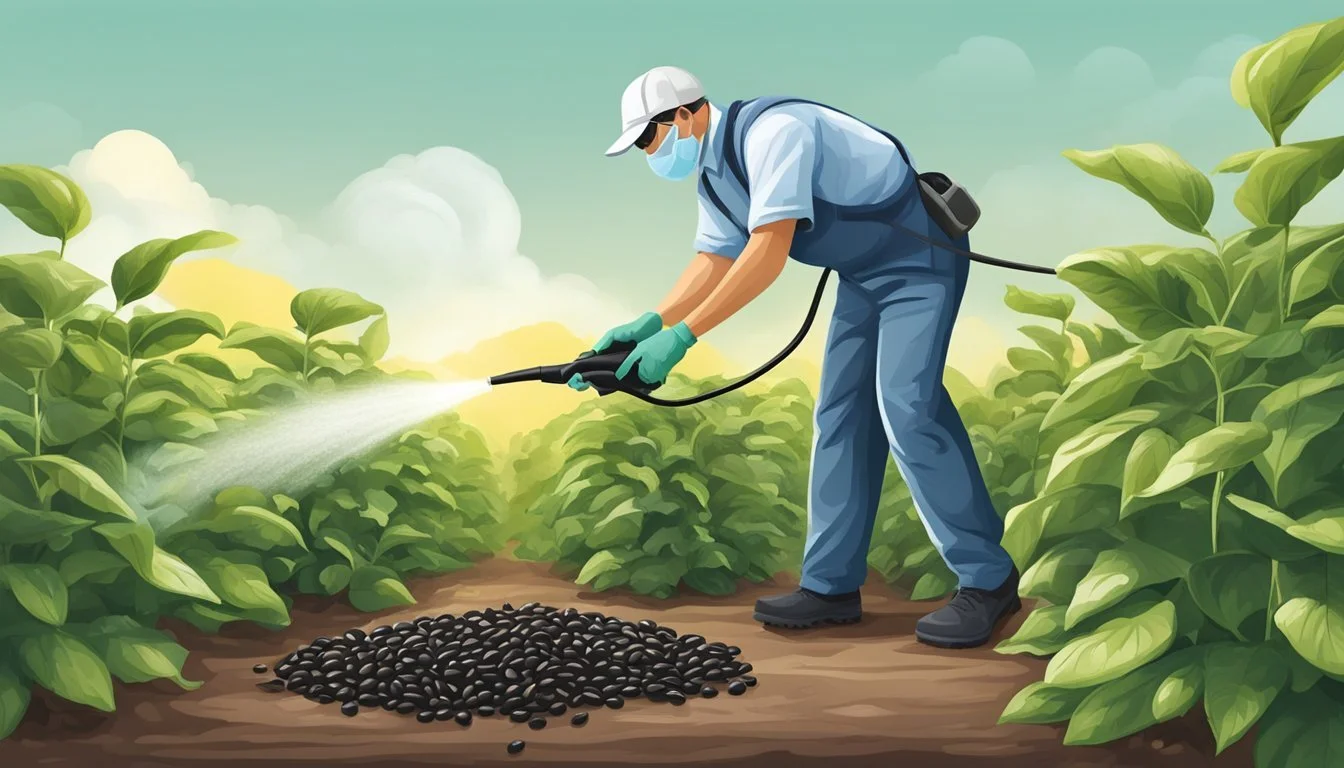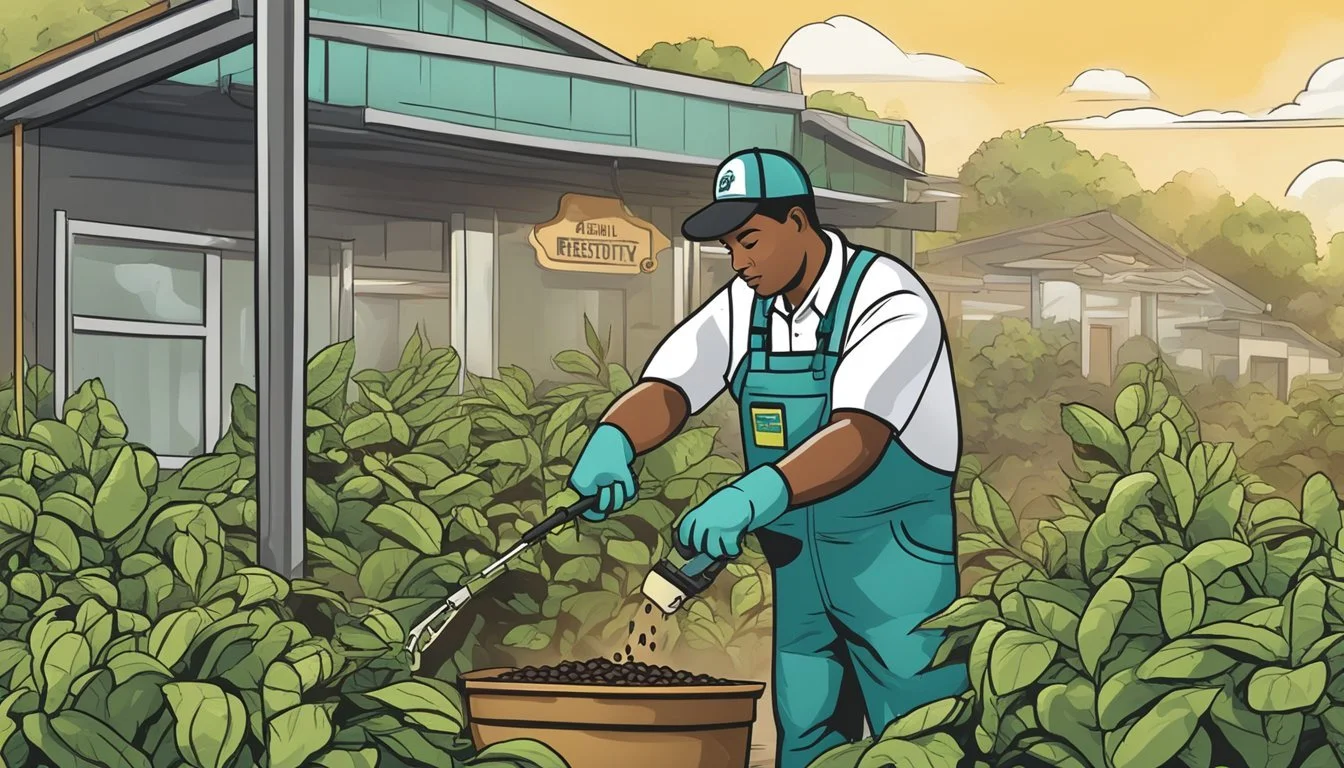Pest Control for Black Beans
Effective Strategies for Healthy Crops
Growing black beans can be a rewarding endeavor, boasting not only nutritional benefits but also the satisfaction of cultivating your own food source. However, like all plants, they can be susceptible to a range of insect pests that can diminish yields and affect plant health. Effective pest control is paramount to ensure that these legumes can reach their full potential. Recognizing the signs of infestation and understanding the measures to manage these pests are crucial steps for gardeners and commercial growers alike.
Insect pests that commonly target black beans include black aphids, cutworms, mites, and beetles, among others. Black aphids, for instance, can form dense colonies and weaken plants by sucking sap, while cutworms can cut down young plants at the soil surface. A strategic approach to pest control for black beans involves regular monitoring, using cultural practices to prevent infestations, and employing environmentally friendly pesticides as necessary. Practices such as crop rotation, proper spacing, and the use of biological controls, like introducing beneficial insects, are part of an integrated pest management strategy that can lead to healthier plants and improved bean yields.
By incorporating a combination of preventive measures and timely interventions, growers can mitigate the impact of pests on black bean crops. A keen eye for early detection and an understanding of pest life cycles are essential tools in the gardener's arsenal. Employing these tactics ensures the protection of black bean plants, allowing them to thrive and produce bountiful harvests.
Understanding Black Bean Pests
Successful pest control for black beans starts with an in-depth understanding of the common pests that affect these plants, their lifecycles, and behaviors, as well as recognizing the signs of damage throughout the seasons.
Common Pests Affecting Black Beans
Black beans are susceptible to several pests, which can include:
Aphids: Tiny insects that typically feed in colonies on the undersides of leaves and stems.
Beetles: This group contains several species like the Mexican bean beetle and Japanese beetle, known for skeletonizing leaves.
Caterpillars: Such as the corn earworm, they can cause significant damage to leaves and pods.
Spider mites: Small arachnids that can cause yellowing and stippling of leaves.
Stink bugs: They damage beans by piercing the pods and sucking out the juices.
Lifecycle and Behavior
The lifecycle of these pests can be generalized into several stages:
Eggs: Laid on or near prospective food sources.
Larva/Nymphs: They are the primary feeding stage, where much of the damage occurs.
Pupate: A developmental stage where insects transform into adults.
Adults: Mature insects capable of reproduction to start new generations.
Most of these pests go through multiple generations per growing season, enhancing the potential for damage if not controlled.
Seasonal Pest Appearance
Early summer (June/July): Warm weather accelerates the appearance of pests like Mexican bean beetles and aphids.
September: As fall approaches, many pests prepare for overwintering, potentially leading to a late-season surge in activity.
Identifying Damage Signs
These pests exhibit distinct feeding patterns:
Aphids: Look for clusters of these small insects on new growth or the undersides of leaves, often accompanied by sticky "honeydew."
Beetles: They leave leaves with a skeletonized appearance and may also be found on stems and pods.
Caterpillars and Corn Earworms: The presence of these pests is indicated by irregular holes in leaves and pods.
Spider Mites: They cause leaves to become yellow and may leave behind fine webs.
Stink Bugs: Their damage often results in stunted growth and discolored pods.
Monitor regularly, especially during peak growing and warm weather periods, for any signs of these pests.
Cultural and Physical Pest Management Strategies
Cultural and physical pest management strategies harness the innate characteristics of the environment and manual interventions to establish a primary line of defense against pests targeting black beans. They prioritize safety and effectiveness without relying heavily on chemical controls.
Preventative Practices
Crop rotation is fundamental in disrupting the life cycle of bean pests, making it harder for them to become established. Incorporating a diverse planting schedule with non-host crops can significantly reduce pest prevalence. Applying compost enriches the soil, fostering stronger plant growth more resistant to pests. Adequate spacing promotes air circulation, which minimizes fungal growth, while planting in full sun ensures optimal growing conditions, deterring many pests.
Physical Removal
Hand-picking is a straightforward yet effective method for removing larger pests such as bean beetles. The simple tools needed for this tactic include a hose to dislodge pests or soapy water to drown them. For smaller pests, a reflective aluminum foil mulch placed around plants can disorient insects and prevent them from settling on the beans.
Using Beneficial Insects
Employing beneficial insects like ladybugs can naturally control pest populations. These natural predators feed on aphids and other harmful insects, offering a biological countermeasure to pest infestation. Encouraging beneficial insects involves creating a habitat that meets their needs, such as providing food sources and shelter throughout the farming landscape.
Chemical Control Measures
In managing pests that affect black beans, chemical control measures are often considered for their efficacy and immediate results. These measures include various pesticides and require careful selection and application to be both effective and safe.
Understanding Pesticides
Pesticides designed for beans come in several forms, including insecticidal soaps and neem oil, which are particularly potent against a broad range of bean pests. Insecticidal soaps work by eroding the outer layers of pests, leading to dehydration, while neem oil works as a repellent, anti-feedant, and growth regulator. Both are considered lower-risk pesticides, but they still require users to follow label instructions precisely. On the other hand, Bacillus thuringiensis is a microbial pesticide that is safe for beneficial insects and can effectively control bean pests if used correctly.
Application Techniques
The application of pesticides requires precision; not all pesticides work against every pest. Spraying is the most common method, but thorough coverage is critical to ensure effectiveness. For pests that reside in the soil or have protected stages, a drench technique can deliver pesticides directly to the target area. The Environmental Protection Agency (EPA) has regulations in place regarding the application of pesticides, and it is imperative to comply with these to avoid harmful effects on the environment and nontarget species.
Responsible Use
Responsible use of pesticides is crucial. Farmers and gardeners must avoid overuse to prevent resistance build-up in pests and potential harm to non-target organisms, including humans. This includes rotating pesticides with different modes of action and using them in combination with other pest management strategies. Following label instructions is also key to the responsible use of pesticides. This involves proper dosage, timing, and method of application, which greatly influence the success rate and safety profile of the pesticide used.
Natural and Organic Options
There are natural and organic options for chemical control that are less likely to pose risks to the environment and human health. Neem oil and insecticidal soaps fall into this category and can be used as part of an integrated pest management program. They provide a way to control pests while still being considerate of the surrounding ecosystem. Ensuring thorough coverage and application at the right time maximizes their effectiveness.
Optimizing Plant Health
To maximize yield and grow robust plants, careful attention to nutrient management, water management, and disease prevention is essential. Properly maintained plants are more resilient to pests and diseases, indirectly aiding pest control efforts.
Nutrient Management
Plants need a balanced supply of nutrients to thrive. Soil quality is paramount; it should be rich and well-fertilized to provide the necessary nutrients. Fertilize beans with a balanced fertilizer to ensure they receive enough nitrogen, phosphorus, and potassium. Regular soil testing can guide the adjustment of nutrient levels, ensuring optimal plant growth and health.
Water Management
Beans require consistent moisture, so it's critical to keep the soil evenly moist without overwatering. Water management involves providing enough water to avoid drought stress while preventing conditions that could lead to overwatering. Use drip irrigation or soaker hoses to target the water directly to the roots and reduce moisture on the foliage, which can lead to disease.
Disease Prevention
Diseases like mold, fungus, bacterial blight, anthracnose, brown spot, rust, and blight can severely impact bean crops. Prevention includes crop rotation, using disease-resistant bean varieties, and removing any plant debris which may harbor pathogens. Regular monitoring can catch issues early, allowing for timely intervention.
Monitoring and Response
In managing pest control for black beans, a robust monitoring system coupled with a timely response strategy is essential. These components enable early detection of pests, rapid intervention, and maintaining control, ultimately protecting the crop from potentially significant damage.
Regular Inspection
Regular inspection is crucial for early detection of common bean pests like aphids. Farmers should monitor their crops for signs of pests, such as the presence of aphids or the damage they cause, such as curled or yellowing leaves. Inspections should occur at least once a week and more frequently during peak growing seasons. During these checks, particular attention should be given to:
The undersides of leaves: where pests like aphids tend to congregate.
Stems and buds: for any unusual marks or changes that might suggest pest activity.
Identifying damage indicators at the earliest stage enables quicker responses to potential infestations.
Record Keeping
Thorough record keeping is imperative to track infestations and record treatments. This data provides insights into the effectiveness of interventions and helps predict future pest outbreaks. Records should include:
Date of inspection
Weather conditions (as some pests thrive in specific conditions)
Types and numbers of pests observed
Specific locations of infestations within the crop
Details of any action taken, including type and quantity of pesticides used
Good documentation creates a historical account of pest activity and control measures, which is vital for planning and refining future pest management strategies. Maintaining meticulous records supports a strategic approach to pest control, allowing for adaptations and improved methodologies over time.
Frequently Asked Questions
When dealing with pests on black beans, gardeners often seek out both immediate and long-term solutions. This section addresses common concerns with straightforward answers and practical tips.
How can I get rid of small black bugs on my bean plants?
One effective non-chemical method to eliminate small black bugs, such as bean beetles, is through "destructive harvest." This entails pulling up heavily infested plants, harvesting any salvageable beans, and disposing of the rest in sealed black plastic bags left in the sun to kill the pests. For more information, one can review Non-chemical pest control options for managing insect pests on beans.
What home remedies are effective for black bean pest control?
Several home remedies can help manage pests on black beans. These include using soapy water sprays to deter aphids and introducing beneficial insects like ladybugs that prey on common bean pests. Tilling soil at the beginning and end of each growing season can also destroy overwintering insects.
Can vinegar be used in controlling pests on black beans?
Vinegar, diluted with water, may function as a natural pesticide due to its acetic acid content. It's important, however, to test this mixture on a small area first as it might harm the bean plants. Users should treat it as a contact herbicide for it to be effective against pests.
What chemical treatments work best against black bean aphids?
Chemical treatments for black bean aphids should be used as a last resort when infestations are severe. Insecticides such as endosulfan or dimethoate can be effective, but it is crucial to follow label instructions and consider the environmental impact. Consider consulting the Agrifarming guide on bean diseases and pests for specifics on chemical control methods.
What are the best practices for preventing bugs from infesting black bean plants?
The best practices for preventing bug infestations include crop rotation, planting beans in full sun after the last frost, and ensuring good air circulation among plants. Moreover, planting bean seeds at the correct depth and spacing can promote healthy growth less susceptible to pests.
How do you treat black bean plants for aphid damage?
Treating black bean plants affected by aphids involves removing the infested areas, using a strong water spray to dislodge the aphids, and applying organic or chemical insecticides if necessary. Be vigilant about monitoring plants for early signs of aphid damage to act quickly.







